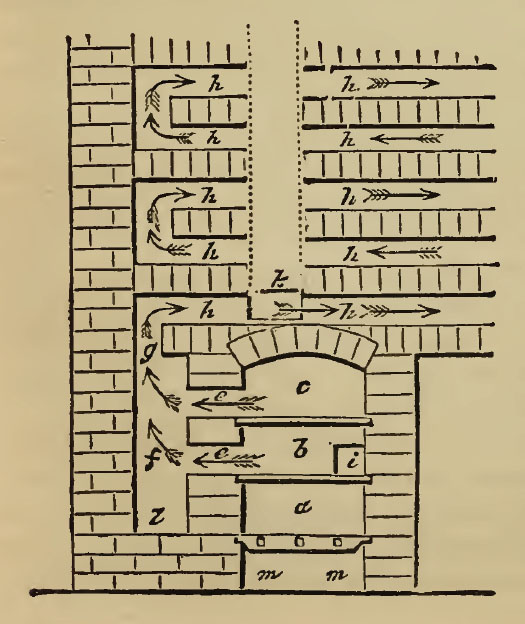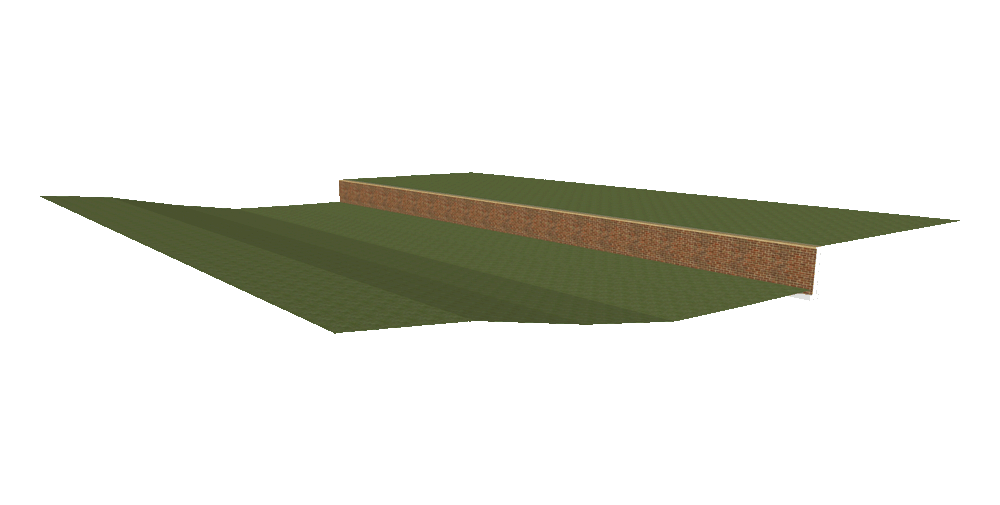Free standing
The simplest walls are free standing and these are normally used when boundaries are walled. In the UK garden walls above 2 metres high, unless they face the public highway when its 1 metre, require planning permission. That said this is only a basic guideline and local rules or covenants can often apply so before you start any work you should make a quick call to you local planning officer. In practice these heights are quiet sufficient and you would need a very good reason before the authorities will allow you to exceed them. When considering the height of the wall you have to remember that if the ground level is lower at one side of the wall than the other the measurement is taken from the lower side and the height includes all parts of the wall including pillars, copings or anything else attached to the wall.
These days most garden walls are either ½ or 1 brick thick; though older gardens will often have 1½ or 2 brick thick ones. The choice of wall thickness will in the first case be determined by what is needed to ensure the wall is stable but then a thicker construction may be chosen for aesthetics. Clearly the thicker the wall the more expensive it will be and all walls are expensive, so a good reason is needed to make a wall thicker then it has to be. An excellent guide to the wall thickness needed for a particular location in the UK can be seen on the Government’s Planning Portal.
Heated walls
The idea of using a garden wall to provide heating may seem strange and very wasteful to us now, but at one time this was state of the art gardening. The walls were built with fireplaces spaced along their length and the chimneys took the form of brick flues snaking up through the walls. The hot smoke and gases from the fires passed up the wall flues, heating the wall as they went. Many are still seen in old large estates around vegetable gardens where they heated lean-to greenhouses built against them. They are easily spotted by the chimney post along the top and are usually thick and generally two stories high.
Retaining walls
This is the commonest reason for walls to be used in a garden. Where a garden requires a change in levels, either by design or necessity, a wall is the most efficient method of achieving this. The wall must be sufficiently strong to support the material it is holding back and in the majority of circumstances this is achieved by the weight of the wall.
In most cases in the garden the amount of material being supported by the wall will be relatively small and the potential danger from the wall failing will be small. In practice, the aesthetics of the wall design will mean it will be sufficiently strong, but if the wall is going to need to be higher expert advice should be sought. Because by their nature retaining walls cut across the natural drainage of the ground there is a danger of water building up behind retaining walls. This can weaken the soil around the wall foundation and therefore weaken the wall. To prevent this drainage must be provided behind retaining walls which empties out through small holes in the wall called weep holes.
Ha-ha
The 18th century saw the English “leap the garden fence” and develop the English landscape Garden style where countryside became the garden, all be it in a much stylised form. To achieve this, the garden boundary had to be hidden to allow the garden to visually run seamlessly into the surrounding fields. To achieve this; the wall is set into the ground below eye level. In practice this is a very expensive process, generally requiring large amounts of earth to be moved in addition to the cost of the wall.





